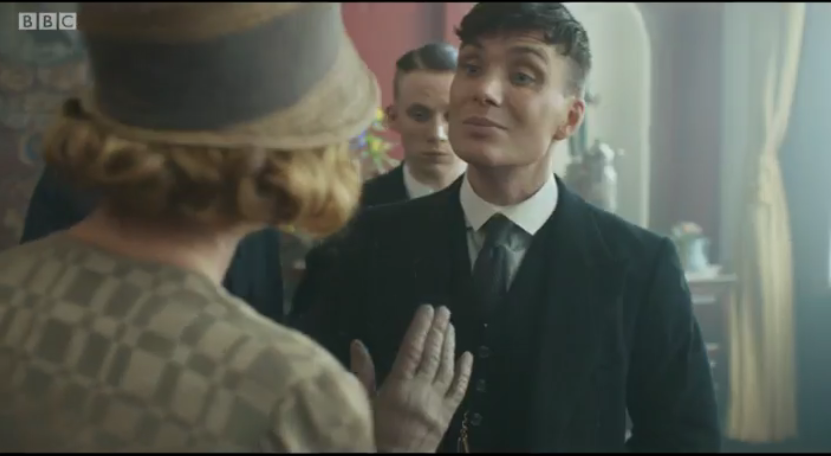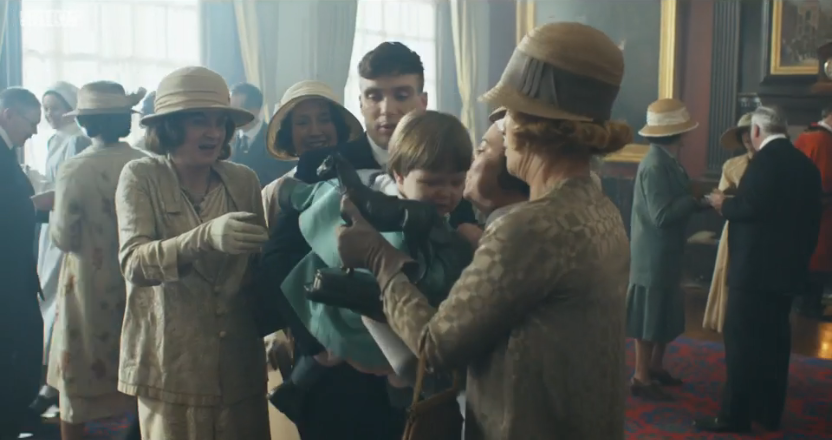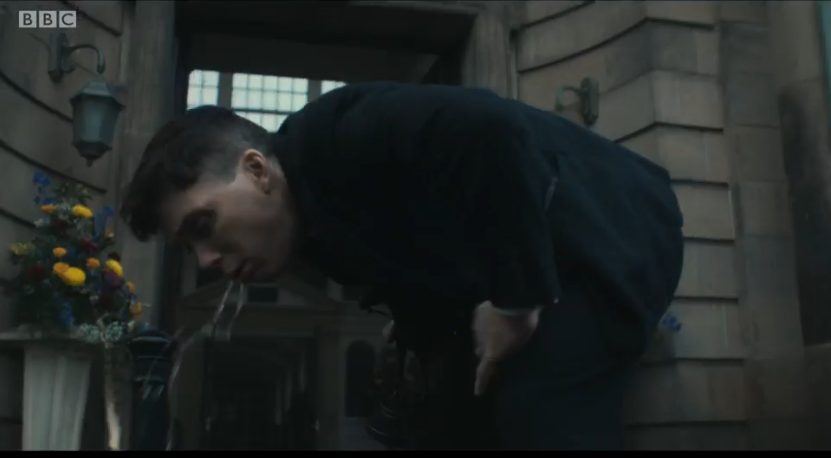Scene Breakdown: How “Peaky Blinders” creates a world of danger
Great shows stand apart from good shows through the ability to visually articulate complex ideas. Engaging viewers on a deep level of visual storytelling means engineering the visuals and audio to communicate a specific combination of literal and emotional information at once. For simplicity’s sake, think of any movie or television episode as a tightly written essay, in which every scene is a paragraph. The information in that paragraph must be succinctly and engagingly written so that subsequent paragraphs can use it as an effective springboard for additional information.
The point of a scene is to convey information that furthers plot, illuminates character or communicates ideas. Sometimes the information we learn is specific, i.e., when characters learn of someone else’s death. Other times the information is less immediately definable. We might learn something that doesn’t impact the plot but illustrates the motive or mindset of a character. For example, in the Season 4 episode of Breaking Bad (2008 - 2013), “Cornered,” Walter White demands that his former boss Bogdan part with his precious first dollar, as he agreed to sell the car wash “as it is.” White then proceeds to waste the dollar to buy a soda from a vending machine. This moment is irrelevant to the discrete plot but is vital in that it illustrates White’s dark, pride-based motives.
In the Season 3 finale of Peaky Blinders (2013 - ), there is a key scene that excels at both types of communication. [Spoilers ahead.]
As was the case with Season 2, Season 3 ramps up the intensity and depravity of 1920s Birmingham while continuing to humanize the deeply flawed characters that make up the Shelby Company Ltd. In their struggle to break into the aristocracy, the Shelby’s find themselves up against forces far more capable and cruel than they could have imagined. This comes to a head during the reception for the opening of the Grace Shelby Foundation for Orphaned Children, where Thomas’s child is kidnapped.
Showing us that Thomas’s child has been kidnapped is a simple enough task, but the creators of the episode use this scene to communicate to the viewer a more profound truth about the world and the characters that reside within it. In Shelby’s own property, a sophisticated and supposedly safe event dedicated to his recently deceased wife, his child has been snatched from him. However, completing the effect requires more than just a fitting environment. The cinematography suits the sort of nauseating truth the show is trying to convey, with roving, dizzying camera movements that often obscure characters and disorientate the viewers. To undercut the contradiction of the two worlds Thomas lives in, a group of widows from the Mosely War Widows Institute consistently distract him with photos and requests while he’s under immense stress attempting to plan the most audacious crime of his career.
Perhaps what makes the kidnapping especially frightening is that Charlie isn’t ripped from Thomas against his will in some violent, dramatic fashion. Thomas actually hands Charlie over to a nurse in his employ in preparation for a picture with the war widows, having his child taken from him at the precise moment he let his guard down.
As the scene continues and Thomas realizes that his son has been snatched, jarring cuts confuse our temporal senses and create a feeling of real panic within the viewer. That panic is mirrored in Thomas’s actual nausea when he vomits at the entrance of the building. Combined with a dissonant hum that escalates as the gravity of the situation dawns on Thomas, not only do we learn that Thomas’s child has been kidnapped but we also understand something more fundamental about Thomas’s status in his world.
We realize that despite the enormity of his wealth, the reach of his power and the strength of his followers, he is in more danger than he has ever been in. Much like Michael Corleone in The Godfather (1972), Thomas has always been able to convince himself that his violent and illegal methods were stepping stones to a safer, more peaceful existence. But this scene forces us, as well as Thomas, to confront the reality of his disillusion. This scene goes beyond a standard approach to television storytelling and immerses the viewer in the scene, briefly pulling off the illusion that this world actually exists.




